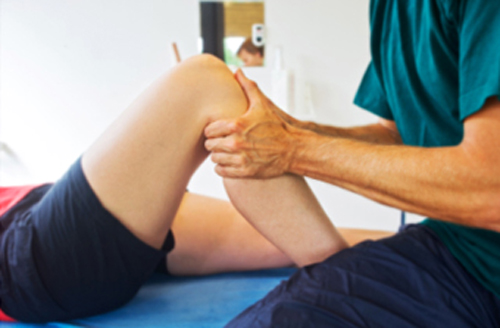Dr. Amresh Jamwal
Osteoarthritis :
Osteoarthritis (OA) is the most common type of Arthritis and major cause of joint pains in the elderly. In India, Osteoarthritis of the knee is more common as compared to Osteoarthritis of other joints. Usually females are more effected than males. Osteoarthritis of the knee is often characterized by decreased joint space, joint pain, swelling, weakness and a lack of flexibility at the effected knee joint. Risk factors of Osteoarthritis of the knee include old age, obesity, Osteoporosis, previous injury, muscle weakness or dysfunction. Usually the inner side of the knee joint is more effected as compared to the outer side. Muscle weakness is associated with pain and loss of proper function and influences the progression of the disease in patients with Osteoarthritis of the knee.
Do’s in Osteoarthritis:
* If suffering from Osteoporosis along with Osteoarthritis, always consult your Doctor regarding which exercises should be done as Osteoporotic bones are prone to fractures even under normal stress.
* Knee joint should be properly supported by using a knee band.
* A walking stick should be used. When used it should be held in the hand opposite to the effected knee.
* If overweight, reducing weight helps in reducing the effects of Osteoarthritis.
Don’t in Osteoarthritis:
* Avoid sitting with both legs crossed.
* Avoid sitting in low chairs or chairs without arm rest.
* Avoid climbing stairs. If necessary, climb stairs using the good leg.
* Prolonged walking should be avoided.
* Avoid walking with heavy weights.
* Avoid repeated standing from sitting.
* Avoid over exercising.
* Don’t stop your medicines on your own. Always consult your Doctor before stopping your medicines.
How exercises help in Osteoarthritis:
Optimal management of patient with mild to moderate Osteoarthritis of the knee requires a combination of pharmacological and non-pharmacological therapies. The effects of high resistance strength training are not always greater than those of low resistance strength training in patients with OA of the knee. A combination of supervised exercises under a Physiotherapist and independent daily home-based exercises in addition to medicines should be provided to such patients. Guidance of a Physiotherapist is necessary because a Physiotherapist has knowledge as to which exercises are suitable for a patient of OA as some exercises can actually worsen OA. In addition to that a Physiotherapist has many techniques to improve joint mobility and suitable equipments such as Ultrasound and TENS which help in reducing pain and swelling around the knee joint.
Effects of exercise in Osteoarthritis of knee:
* It is effective in reducing pain.
* It helps in maintaining normal walking pattern.
* It improves blood circulation of the knee joint.
* It helps in improving range of motion of the effected knee joint.
* It strengthens the muscles around the knee thus improving its ability to carry weight properly.
* It improves flexibility of the muscles around the knee joint.
* It also provides a psychological sense of well being to the patient.
Common reasons of OA patients for failure to do exercise regularly:
* Attitudes towards exercise: Most patients don’t do exercise as they don’t consider it as important as other activities they do daily and find it difficult to take out time for doing exercise. Hence they develop a non committed attitude towards exercise.
* Perceived severity of Osteoarthritis: Patients who believe that OA is incurable find it hard to believe that doing exercise is going to help them and hence they develop a resigning attitude towards exercise.
* Expecting extra ordinary results: Some patients believe they will get immediate results by doing exercises. They do exercise for few days and then quit doing exercises when they don’t get results they thought they will get.
* Age: Most elderly patients find it difficult to carry out exercises and hence they don’t do exercise.
* Increase in pain: This usually occurs because of doing exercises incorrectly.
An important point to be noted is that most patients with Osteoarthritis of the knee demonstrate significant weakness of the hip musculature also. Therefore, not only the knee muscles but the hip joint muscles should also be exercised in order to maintain the effect of exercise on muscle strength in patients with Osteoarthritis of the knee.
(The author is a Physiotherapist)
Trending Now
E-Paper


